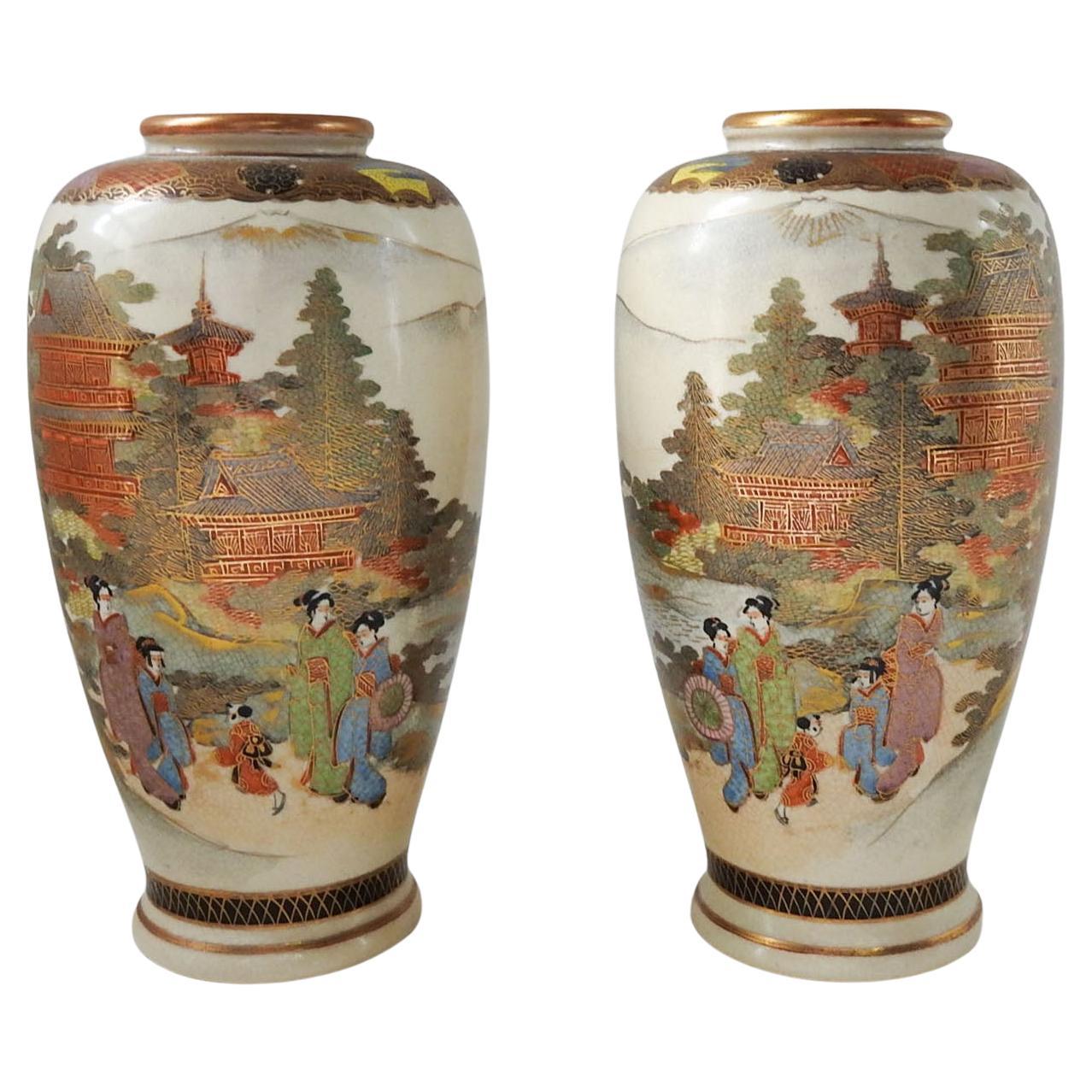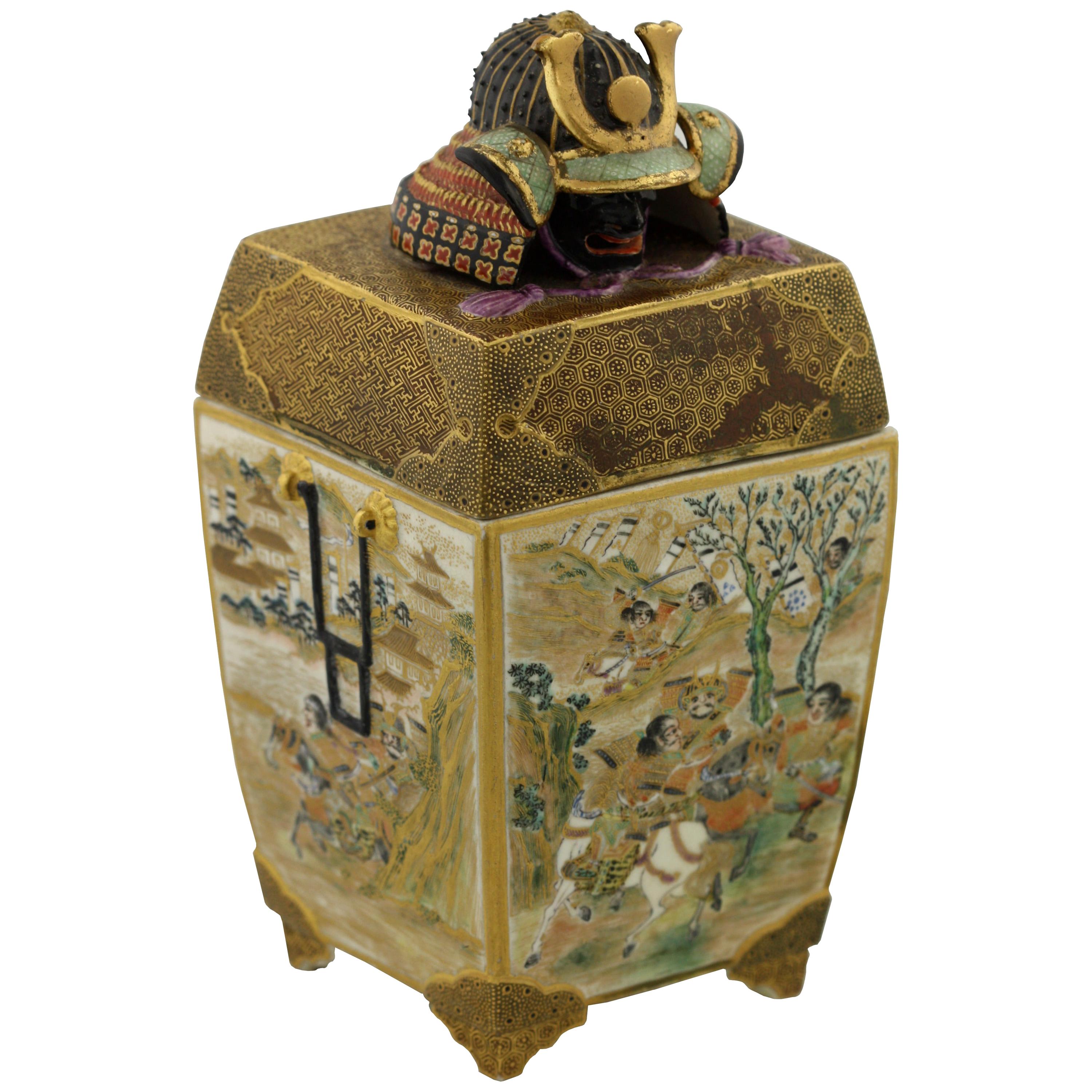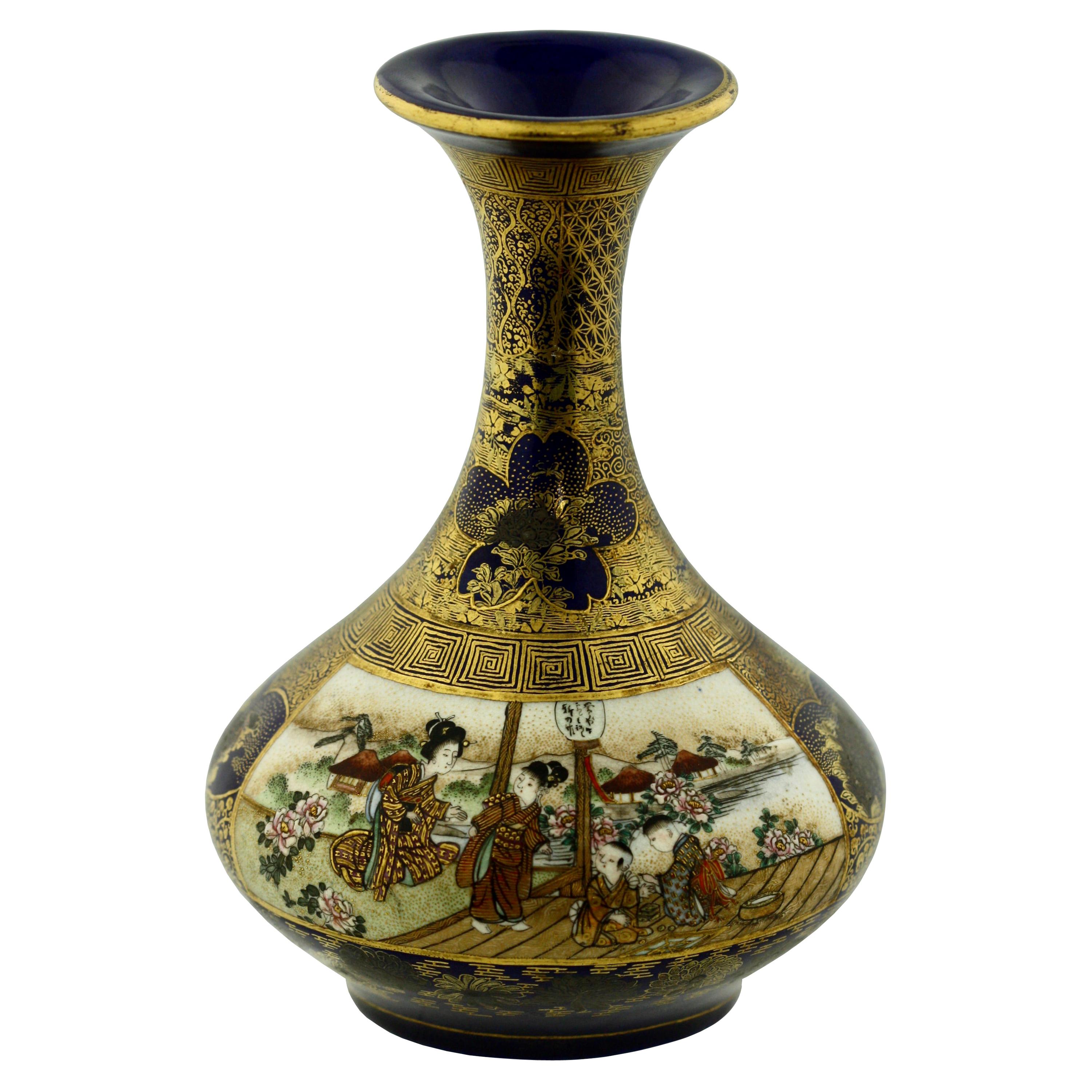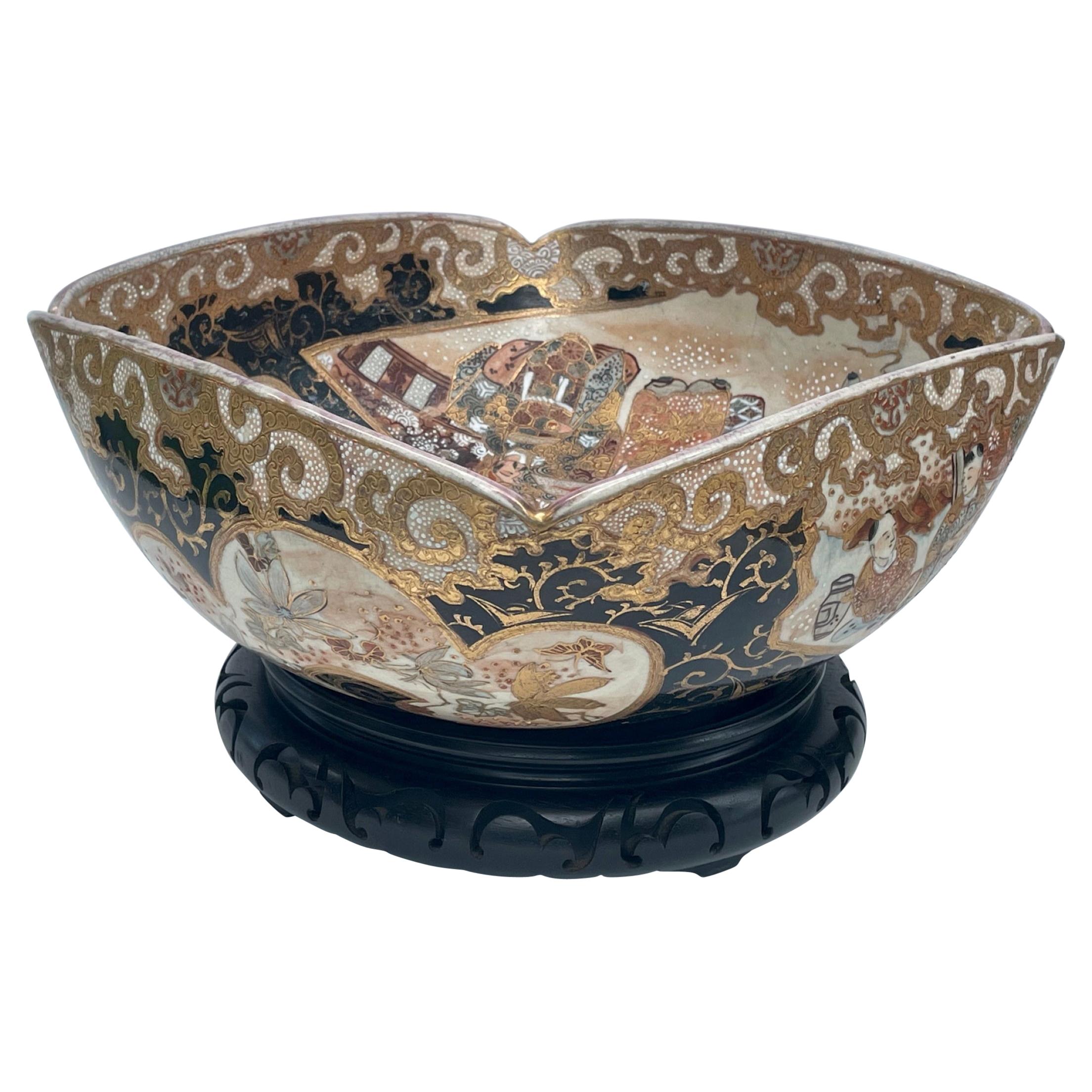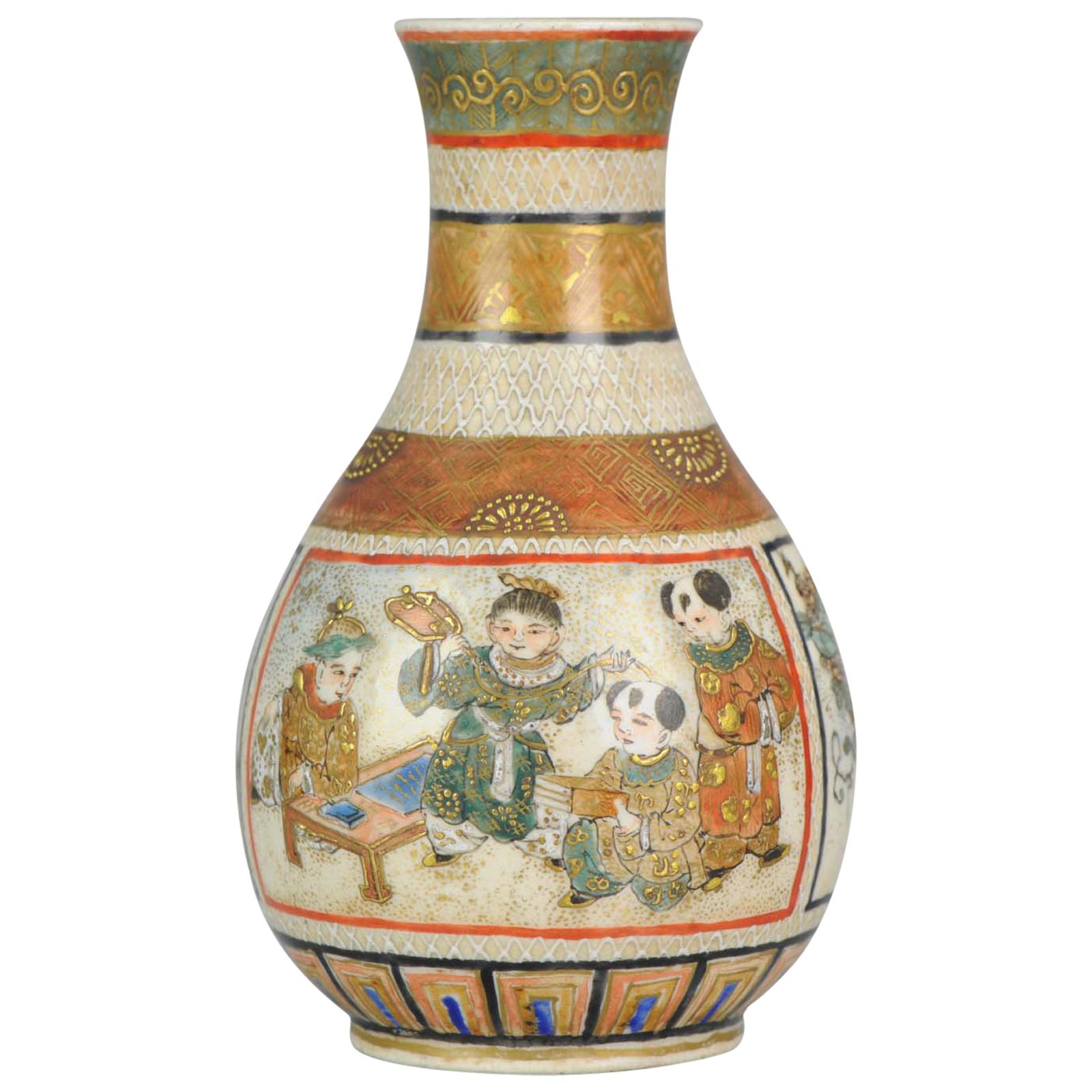Items Similar to Meiji Period Diminutive Satsuma Baluster Vase.
Want more images or videos?
Request additional images or videos from the seller
1 of 14
Meiji Period Diminutive Satsuma Baluster Vase.
About the Item
Meiji Period Diminutive Satsuma Baluster Vase.
This Japanese Satsuma vase from the late Meiji period is hand painted and gilt decorated with a Japanese landscape in exquisite detail. The scene in nature is lush with hanging boughs of flora and two birds in flight among the blossoms. The baluster shaped Satsuma vessel is signed to the base and in excellent condition with minor surface wear.
Satsuma-ware derives its name from the region of Satsuma, Japan where the style of porcelain and ceramic works originated.
Measurements: Height 4 ¾” x Diameter 2 ½”
Weight: 5 oz.
- Creator:Satsuma (Maker)
- Dimensions:Height: 4.75 in (12.07 cm)Diameter: 2.5 in (6.35 cm)
- Style:Meiji (Of the Period)
- Materials and Techniques:
- Place of Origin:
- Period:
- Date of Manufacture:Meiji Period
- Condition:Wear consistent with age and use.
- Seller Location:Vero Beach, FL
- Reference Number:1stDibs: LU3915336649072
About the Seller
4.8
Platinum Seller
These expertly vetted sellers are 1stDibs' most experienced sellers and are rated highest by our customers.
Established in 2018
1stDibs seller since 2018
182 sales on 1stDibs
Typical response time: <1 hour
- ShippingRetrieving quote...Ships From: Vero Beach, FL
- Return PolicyA return for this item may be initiated within 14 days of delivery.
More From This SellerView All
- Japanese Meiji Period Satsuma Large Square Bowl CenterpieceBy SatsumaLocated in Vero Beach, FLJapanese Meiji Period Satsuma large square bowl Antique early Meiji Period 15" square with scalloped rim Satsuma bowl. Highly unusual and finely painted. ...Category
Antique 19th Century Japanese Meiji Ceramics
MaterialsCeramic
- 19th Century Japanese Satsuma Porcelain Water Well Bucket, Wishing Well VaseBy SatsumaLocated in Vero Beach, FLThis Japanese porcelain vase is barrel shaped with a yolk handle. It is both finely and intricately hand painted. It pictures groups of scholars with scrolls dressed in elaborate brocade kimonos...Category
Antique Late 19th Century Japanese Meiji Ceramics
MaterialsPorcelain
- Meiji Period Large Japanese Imari Bowl CenterpieceBy Imari PorcelainLocated in Vero Beach, FLMeiji period large Japanese Imari bowl centerpiece This large, distinctive, octagonal porcelain Imari bowl is painted in rich, inky blue, co...Category
Antique 19th Century Japanese Meiji Ceramics
MaterialsPorcelain
- Large Important Japanese Meiji Satsuma Covered Urn with Foo DogLocated in Vero Beach, FLLarge Important Japanese Meiji Satsuma Covered Urn with Foo Dog. Large impressive Japanese Meiji period (1868-1912) Satsuma porcelain covered urn...Category
Antique Early 1900s Japanese Japonisme Ceramics
MaterialsPorcelain
- Large Pair Antique Chinese Famille Rose Porcelain Baluster VasesLocated in Vero Beach, FLLarge pair Antique Chinese Famille Rose Porcelain Baluster vases. Early 20th century pair of large Chinese Famille Rose porce...Category
Early 20th Century Chinese Chinese Export Ceramics
MaterialsPorcelain
- Antique Chinese Green Blue Shiwan Pottery TeapotLocated in Vero Beach, FLAntique Chinese Green Blue glazed Shiwan pottery teapot dates to China’s Kuang Hsu Dynasty and is of the late 19th century. The vibrant teal-green glaze pot...Category
Antique Late 19th Century Chinese Qing Ceramics
MaterialsCeramic
You May Also Like
- Antique Meiji Period Satsuma Shimazu Vases - a PairBy SatsumaLocated in Seguin, TXCirca 1900 pair of Satsuma vases. Hand painted coastal landscape, mountains, women and children outside of elaborate homes. Signed on the bottom with the Shimazu Clan crest, wear to...Category
Early 20th Century Japanese Meiji Ceramics
MaterialsCeramic
- Satsuma Imperial Vase "A Thousand Faces" Meiji PeriodBy SatsumaLocated in Autonomous City Buenos Aires, CABASatsuma Imperial Vase "A Thousand Faces" Meiji Period A Japanese collectible vase, hand painted decorated with intricate designs and figures, with a classic shape and painted with va...Category
Antique 19th Century Japanese Meiji Ceramics
MaterialsCeramic
- Satsuma Earthenware Vase and Cover, Japanese, Meiji PeriodBy SatsumaLocated in West Palm Beach, FLA Satsuma Earthenware vase and cover, Japanese, Meiji period, (1868-1912) decorated in polychrome enamels and gilt over a clear, crackled glaze, delicately painted with samurai on ...Category
Antique 1890s Antiquities
MaterialsCeramic
- Satsuma Earthenware Vase, by Kinkozan, Japanese, Meiji PeriodBy SatsumaLocated in West Palm Beach, FLA Satsuma Earthenware Vase, by Kinkozan, Japanese, Meiji period (1868-1912) decorated in polychrome enamels and gilt over a clear, crackled glaze, delicately painted with ladies and men, the reverse with a flowering garden with sprays of flowers, the neck with geometric and floral designs, a band of kifu heads in silver and gilt above the foot, on a midnight-blue ground, signed Kinkozan zo...Category
Antique 1860s Vases
MaterialsEarthenware
- Antique 19th Century Japanese Satsuma Baluster Vase Japan Boys Meiji PeriodLocated in Amsterdam, Noord HollandFabulous Japanese Satsuma Baluster vase, small sized. Unmarked Condition Overall condition 1 frit to rim, further crackled as usual. Size: 125mm Period Meiji Periode (1867-19...Category
Antique 19th Century Japanese Meiji Ceramics
MaterialsEarthenware
- Satsuma earthenware vase by kinkozan, Meiji periodBy KinkozanLocated in Tel Aviv - Jaffa, ILthe body of this small marvelous vase is painted with a scene of a puppet show vendor with his wood backpack, on top of the backpack there are toys and dolls, he is surrounded with a group of 6 children, and on the background you can see a village. on the other side of the vase there is an amazing painting of flowers and on the sides there are two amazing strong pine trees, the amorphous background is decorated in a "Tortoiseshell" color and design that gives it a real character and which is quite rare to see on satsuma pottery. all the vase is over richly overpainted over the glaze with gold, which gives it its depth and realism. signed Kyoto Kinkozan zo, and sealed Kinkozan zo Kyoto’s Satsuma: The painting technique used in Kyoto’s Satsuma-style ware is said to be the invention of the sixth generation Kinkōzan Sōbei (1824–1884). The Kinkōzan were a famous family of Kyoto Awataguchi potters who made ceramics that were used at Shōren'in, a temple closely tied to the imperial family, and by the shoguns of the Edo government. In fact the shogun is said to have granted them the name Kinkōzan. With the upheavals at the end of the Edo period, however, and the reforms of the subsequent Meiji government, the potters lost their traditional patrons and had to develop new markets. Just at that time, the visit of a certain Westerner is said to have decided them to embark on overseas trade. By 1870, they had perfected Kyō Satsuma...Category
Antique 1890s Japanese Meiji Ceramics
MaterialsGold
Recently Viewed
View AllMore Ways To Browse
Satsuma Ceramics
Vintage Japanese Satsuma Vase
Antique Asian Blue White Porcelain Vase
Chinese Export European Scene
Green Glazed Chinese Bird
Pair Of Chinese Export
Chinese Peach Porcelain
Wucai Jar
Japanese Crane And Bamboo Picture
Meiji Yamatoku
Ono Kotaro
Satsuma Tea Caddy
Abn Amro
Abn Antique
African Wooden Elephant Bowls
Audio Diffusers
Bamboo Chocker
Japanese Lucky Cat
